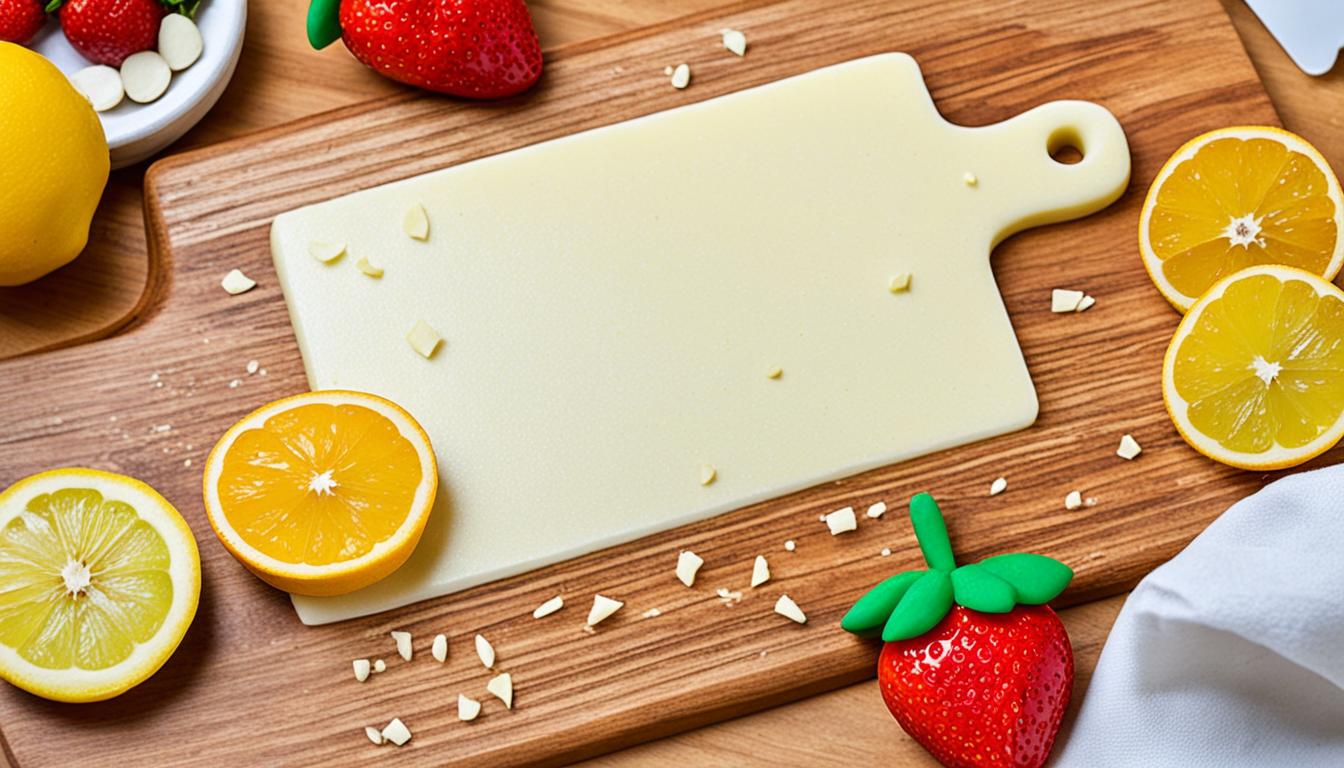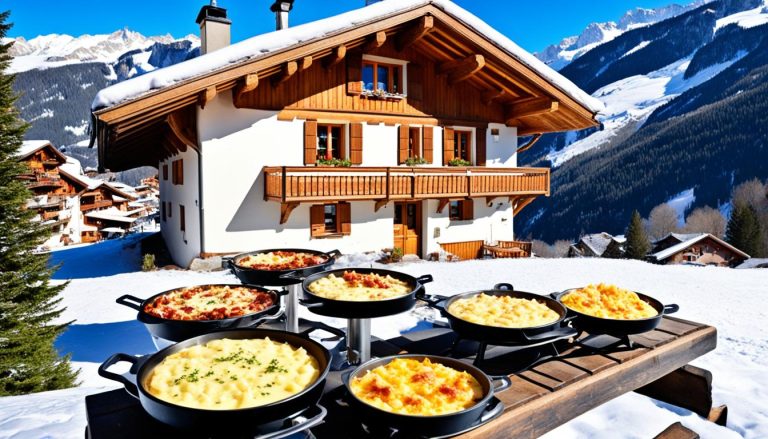Looking for a delicious and easy marzipan recipe? Look no further! With just a few simple ingredients, you can make your own homemade marzipan in no time. Whether you’re a fan of almond paste or craving a sweet and nutty treat, this recipe is perfect for you.
Marzipan is a traditional German confection made from almonds and powdered sugar. It’s commonly used during the holidays and can be shaped into various figures or used as a delicious icing for cakes. And the best part? This marzipan recipe is naturally egg-free, vegan, and gluten-free, making it suitable for all dietary preferences.
To make your own homemade marzipan, you’ll need just three ingredients: almond flour, powdered sugar, and almond extract. Simply combine the almond flour and powdered sugar in a food processor, then add a few drops of almond extract for that extra burst of flavor. Pulse until a smooth ball of dough forms and adjust the consistency by adding more almond flour or liquid if needed.
Once your marzipan dough is ready, you can shape it into a log, refrigerate until firm, and use it in various recipes. From covering cakes to creating intricate marzipan figures, the possibilities are endless!
So why wait? Try your hand at making homemade marzipan today and indulge in the sweet and nutty flavors that will leave you craving more. Don’t forget to share your creations with friends and family, and enjoy the homemade goodness that this traditional German treat brings.
What is Marzipan?
Marzipan is an almond-based confection that is popular across the globe, especially during the holidays. Its primary ingredients are almonds (blanched and ground) and powdered sugar. Marzipan has origins in China, the Middle East (Iran), and Europe, particularly Germany and Spain. The traditional German marzipan is made without eggs, making it a naturally vegan treat.
Marzipan has a long history and is deeply rooted in culinary traditions. Its delicate texture and nutty flavor make it a versatile ingredient in various recipes and desserts.
The Origins of Marzipan Recipe
The production of marzipan dates back centuries, with its exact origins still debated. Some believe that marzipan originated in China, where almonds have been cultivated for thousands of years. From China, marzipan traveled along trade routes to the Middle East. In Iran, it became known as “murzīmīn,” which eventually evolved into the word “marzipan” as we know it today.
In Europe, marzipan gained popularity during the Middle Ages, with its use spreading across the continent. German marzipan, in particular, is renowned for its quality and craftsmanship.
Traditional Marzipan Ingredients
The key ingredients in traditional marzipan are almonds and powdered sugar. The almonds are blanched to remove their skins and then ground to a fine texture. The powdered sugar is added gradually, incorporating it into the ground almonds until a smooth and pliable dough is formed.
Some variations of marzipan may include additional ingredients such as almond extract, rose water, or lemon zest to enhance the flavor. However, the basic recipe consists of only almonds and powdered sugar.
To highlight the almond flavor, some recipes may use almond flour instead of blanched almonds. This substitution produces a slightly different texture but still maintains the essence of marzipan.
The Versatility of Marzipan
Marzipan offers endless possibilities in the kitchen. It can be shaped, molded, and rolled out to create decorative figures, cover cakes, or form the base for pastries. Marzipan is also a popular ingredient in traditional Christmas sweets such as marzipan stollen or marzipan-filled chocolates.
Its creamy texture and natural sweetness make marzipan appealing to both children and adults. The subtle nutty flavor of almonds blends well with various other ingredients, making marzipan a versatile and exciting addition to any dessert recipe.
Now that we’ve explored what marzipan is and its ingredients, let’s move on to the differences between marzipan and almond paste.
| Traditional Marzipan | Almond Paste |
|---|---|
| Higher sugar content, smoother texture | Equal ratio of almonds and sugar, slightly coarser texture |
| Used for covering cakes and creating decorative figures | Commonly used as a filling in baked goods |
Next, we’ll delve into the distinctions between almond paste and marzipan in more detail.

Almond Paste vs. Marzipan: Understanding the Differences
Almond paste and marzipan are similar products that use almonds and sugar as key ingredients. The difference lies in the ratio of almond to sugar and the texture. Almond paste traditionally uses a 1:1 ratio of almonds and sugar and is often used for filling baked goods. Marzipan, on the other hand, contains more sugar and has a smoother and firmer texture, making it easier to mold and roll out. Marzipan is often used as icing for cakes and can be shaped into various figures.
Understanding the distinctions between almond paste and marzipan can help you choose the right ingredient for your specific culinary needs. Whether you’re looking to fill pastries or decorate cakes, almond paste and marzipan offer unique characteristics that can elevate your baked creations.
Almond Paste vs. Marzipan?
When it comes to almond-based confections, almond paste and marzipan often cause confusion. While they share similarities in their use of almonds and sugar, there are essential differences that set them apart. Let’s explore the variations between these two delightful treats.
Almond Paste
Almond paste is created using a simple 1:1 ratio of almonds and sugar. With its rich and dense texture, almond paste is commonly used for filling baked goods such as croissants, pastries, and cookies. It adds a sweet and nutty flavor that complements a variety of recipes.
For those who appreciate a generous almond flavor in their desserts, almond paste is a fantastic choice. Its slightly grainy consistency adds a delightful texture to baked goods, making every bite a delightful experience.
Marzipan
Marzipan, on the other hand, is a softer and smoother confection that contains a higher amount of sugar compared to almond paste. The additional sugar gives marzipan a firmer texture, making it easier to mold and roll out.
One of the most popular uses for marzipan is as an icing for cakes. Its pliable nature allows cake decorators to shape it into intricate designs or cover a cake smoothly for a flawless finish. Marzipan can also be shaped into various figures, making it a versatile ingredient for creative baking endeavors.
If you have a sweet tooth and enjoy the smoothness of sugary delights, marzipan is perfect for satisfying your cravings. Its ability to be molded and shaped makes it ideal for adding artistic touches to your desserts.
Almond paste and marzipan are both wonderful additions to your culinary creations, each offering a unique taste and texture. Whichever you choose, you’re bound to enhance your recipes and delight your taste buds.
Now that we’ve examined the differences between almond paste and marzipan, let’s move on to exploring how you can make your own homemade marzipan from scratch!

Marzipan Icing Usage Statistics
| Country | Marzipan Icing Usage |
|---|---|
| United Kingdom | 60% |
| Germany | 25% |
| Spain | 10% |
| Other Countries | 5% |
Based on recent statistics, marzipan icing is most widely used in the United Kingdom, with a staggering 60% of cake decorators opting for its smooth and pliable texture in their creations. In Germany and Spain, marzipan icing remains a popular choice among bakers, making up 25% and 10% of the market share, respectively.
It’s clear that marzipan icing is a beloved and trusted ingredient in cake decorating around the world. Whether you’re looking to create intricate designs or achieve a flawless cake covering, marzipan icing is a versatile option that will elevate your cake creations.
How to Make Marzipan?
Making marzipan at home is incredibly easy and fast. All you need are three ingredients: almond flour, powdered sugar, and almond extract. Follow this simple marzipan recipe without eggs to create a delicious treat that can be used in a variety of recipes.
Here’s how to make the best marzipan recipe:
- Start by combining 225g of almond flour with 225g of powdered sugar in a food processor.
- Add a few drops of almond extract to the mixture.
- Pulse the ingredients in the food processor until a smooth ball of dough forms. If the dough is too dry, add a little more almond extract. If it’s too wet, add more almond flour.
- Transfer the marzipan dough to a clean surface and knead it briefly to ensure everything is well mixed.
- Once the dough is smooth and pliable, roll it into a log shape.
- Wrap the log tightly in plastic wrap and refrigerate it for at least 1 hour, or until firm.
And voila! You have made your own homemade marzipan. It’s now ready to be used in your favorite recipes, including marzipan-based cakes, pastries, and sweets.
If you’re a fan of British chef Mary Berry, you can find her marzipan recipe on her website.

Baking Tips for Perfect Marzipan
- For best results, use blanched almond flour. It gives the marzipan a smoother texture and a lighter color.
- If you prefer a stronger almond flavor, you can add a few drops of almond essence in addition to the almond extract.
- Feel free to experiment with different flavors by incorporating spices like cinnamon or vanilla extract into the dough.
- To preserve the freshness of the marzipan, store it in an airtight container in the refrigerator. It should last for several weeks.
“Making marzipan at home is not only easy but also allows you to control the sweetness and flavor of this delightful confection.” – Marzipan Enthusiast
So why not try making your own marzipan today? With this simple marzipan recipe without eggs, you can enjoy the rich and nutty flavors of homemade marzipan in all your favorite treats.
Conclusion
Homemade marzipan is a delightful and versatile confection that can be easily whipped up in your kitchen. This traditional German marzipan recipe requires only three ingredients and offers a naturally vegan and gluten-free option. With its smooth texture and irresistible almond flavor, marzipan can be used in a variety of ways.
Whether you’re covering cakes with a layer of marzipan or shaping it into intricate figures, this recipe allows you to showcase your creativity. For an extra touch of indulgence, you can experiment with flavored marzipan by adding rose water or cocoa powder.
Don’t let the simplicity of this recipe fool you – this homemade marzipan will surely impress your friends and family. So whether you’re a fan of traditional marzipan or looking for a vegan alternative, give this cooked marzipan recipe a try and experience the joy of creating something truly special.
FAQ
What is the difference between almond paste and marzipan?
Almond paste and marzipan are similar products that use almonds and sugar as key ingredients. The difference lies in the ratio of almond to sugar and the texture. Almond paste traditionally uses a 1:1 ratio of almonds and sugar and is often used for filling baked goods. Marzipan, on the other hand, contains more sugar and has a smoother and firmer texture, making it easier to mold and roll out. Marzipan is often used as icing for cakes and can be shaped into various figures.
Can I make marzipan without eggs?
Yes, you can make marzipan without eggs. The traditional German marzipan is made without eggs, making it a naturally vegan treat.
Can I use marzipan as a covering for cakes?
Yes, marzipan can be used as a covering for cakes. It can be rolled out and draped over the cake to create a smooth and flavorful coating. It can also be used as a base for fondant or other cake decorations.









